You’ve probably seen it happen countless times. You type a question into Google, hit enter, and before you even scroll down, there it is—a neatly boxed answer right at the top of the page. That, my friend, is the magic of a featured snippet. It’s like hitting the SEO optimization jackpot: the coveted Position Zero.
This isn’t just another SEO trend. Featured snippets are revolutionizing how we consume information online. Literally, 90% of organic traffic to websites comes through this way. When you understand the user intent and query, you can create snippet-worthy answers that ensure visitors come to your website more often. Think of it as crafting answers that are so good, Google can’t help but showcase them.
But how do websites earn this golden spot? It’s not just luck; it’s SEO marketing strategy. Featured snippets are becoming increasingly essential for SEO success, especially in 2025. They’re no longer just a perk—they’re a necessity.
In this blog, we will walk you through everything you need to know about featured snippets. We will also show you how to SEO optimization in your snippet content for this section and improve your Google-featured snippets SEO marketing strategy.
Table of Contents
What are the featured snippets?
Featured snippets are highlighted search results that appear above organic listings in Google’s SERP. They aim to provide searchers with quick, clear answers to their questions without requiring them to click through to a website. These snippets pull content from pages that Google deems most relevant and useful for a particular query.
Optimizing for featured snippets can place your content directly in front of searchers, enhancing your brand’s visibility and driving more traffic. Since a snippet appears before other regular search results, it is the perfect place to grab the attention of online searchers. And depending on the search query, Google shows various featured snippet types, which we will discuss next.
Type of featured snippet with example:
We come across several types of featured snippets on search engines like Google. These types are based on what the searcher is looking for and the information in the search query. Understanding them helps you adjust your content for the specific snippet format preferred by your audience. The most common forms of featured snippets that you will find are
1. Paragraph Snippets
These snippets provide concise answers to queries, typically in 40–50 words.
For example:
- Query: “What is SEO optimization?”
- Snippet: “SEO optimization is the process of improving your website to rank higher in search engine results pages (SERPs), driving organic traffic and enhancing user experience.”
How to Optimize:
- Write short, clear, and direct answers to frequently asked questions (FAQs).
- Use headings in the form of questions (e.g., H2 or H3 tags).
- Place your answer immediately after the heading.
2. List Snippets
List snippets can be either ordered (step-by-step) or unordered (bullet points). For instance:
Query: “How to optimize for featured snippets?”
Snippet:
- Identify high-ranking keywords.
- Write concise answers.
- Structure content with headings.
- Use lists, tables, or visuals.
How to Optimize:
- Structure your content in lists using HTML tags (, , and ).
- Use action-driven headings (e.g., “Steps to Optimize Your Site”).
- Break down content into bite-sized steps or points.
3. Table Snippets
Table snippets work best for comparisons or numerical data. Example:
Query: “Best SEO optimization tools in 2025”
Snippet:
| Tools | Service | Price |
| Ahrefs | Backlink analysis | $99/month |
| SEMrush | Keyword research | $119/month |
How to Optimize:
- Use HTML tables to organize data clearly.
- Ensure your data is accurate, up-to-date, and relevant.
- Label table headers to match user intent (e.g., Price, Features, Benefits)
- AI Overviews
When Google determines that a search query can be best answered through generative responses, it relies on AI Overviews. This is especially helpful when the searcher needs information from diverse web sources and Google’s Knowledge Graph.
AI Overviews is a more recent addition to the Google search experience. Thanks to this handy feature, you no longer have to go through different websites and pages to find information manually. Rather you are getting an informative summary of the query. So, if we submit ‘what is SEO optimization?’ as the search query, we get a detailed answer on right side.
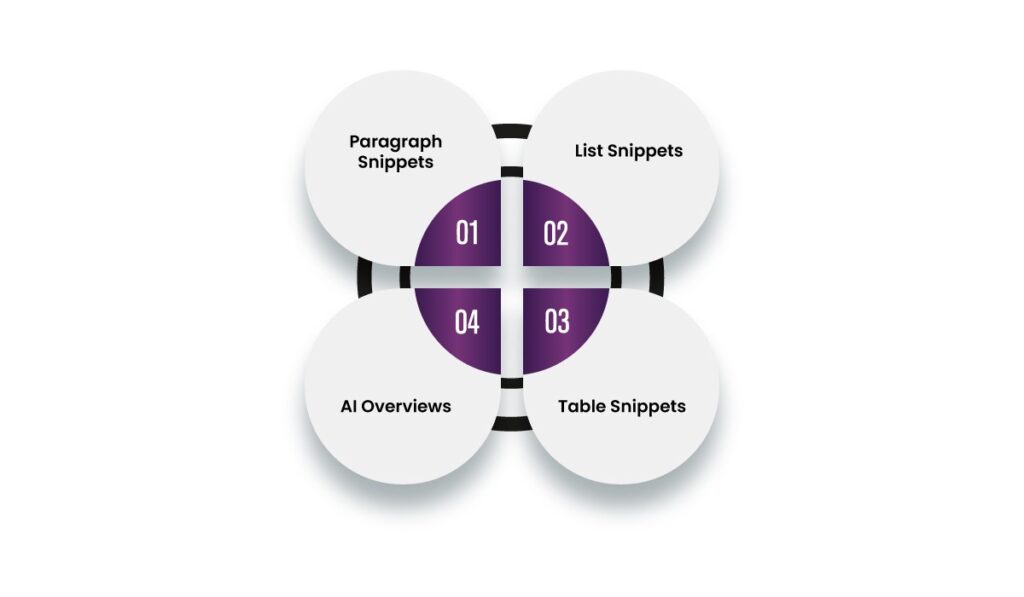
Steps to Optimize Your Site for Featured Snippets
Now that we have covered various types of featured snippets, let us find out how to implement SEO optimization in your content for a higher likelihood of appearing in snippets. So, we will present some key points that will help you in Google Snippets SEO optimization.
1. Focus on Question-Based Keywords
Users search for answers to specific questions. Integrating these questions into your content boosts your chances of snagging a featured snippet.
In 2025, searchers rely heavily on conversational and specific queries. Imagine someone asking, “What’s the best way to optimize my site for Google?” Your goal is to directly address these types of questions. Start by researching tools like AnswerThePublic, SEMrush, and Google’s “People Also Ask” section to uncover the exact questions your audience is asking. Once you’ve identified these, weave them naturally into your content. For instance, if your audience asks, “How do featured snippets improve CTR?” dedicate a clear, concise section to answering this.
2. Write with Search Intent in Mind
Align your content with user intent—whether it’s informational, navigational, or transactional. Featured snippets thrive on content that directly answers user queries.
Think of user intent as the reason behind their search. Are they looking to learn, navigate, or take action? Let’s say a user searches, “How to increase page speed for snippets?” Here, the intent is informational. To serve this intent, create a precise answer like: “Page speed impacts your snippet ranking because Google prioritizes fast-loading sites. Compress images, minimize JavaScript, and leverage caching for optimal results.” This approach builds trust while aligning perfectly with their intent.
3. Organize Content Logically
Structured content is easier for search engines to understand and feature.
Think of your content as a well-organized library. Each section has a purpose and builds on the one before it. Use headers like “Step 1: Research Keywords” and “Step 2: Create Targeted Content” to create a natural flow. Subheadings are your breadcrumbs for both users and search engines. A clear hierarchy with H1s, H2s, and H3s ensures readers find answers without feeling lost in walls of text.
4. Give High-Quality Visuals(video or image)
Although featured snippets are text-heavy, Google increasingly incorporates visuals.
Visuals not only enrich the user experience but also make your content snippet-worthy. Let’s say your blog explains “How to meditate.” Include a clear infographic illustrating the meditation steps. Label your image alt text descriptively, like “Meditation Steps Infographic.” These details make your visuals accessible while increasing the likelihood of being included in image-based snippets.
5. Improve Page Speed
Page speed directly impacts user experience and search rankings.
Imagine clicking on a link only to wait endlessly for it to load. Frustrating, right? Google recognizes this frustration and rewards fast-loading pages with better rankings. Use tools like Google PageSpeed Insights to identify slow-loading elements. For example, large image files often drag down speed. Compress them to reduce their size without compromising quality. This small tweak can significantly improve both user satisfaction and search engine performance.
6. Optimize for Mobile-First Indexing
In 2025, mobile users dominate search traffic. Ensure your site provides a seamless experience across devices.
Picture your audience browsing your site while on the move. If your site isn’t mobile-friendly, they’ll bounce faster than you can say “snippet.” Use responsive designs that adjust seamlessly to any screen size. Test your site on various devices to ensure buttons are clickable, text is readable, and navigation feels effortless. Remember, mobile-first isn’t a trend; it’s the norm.
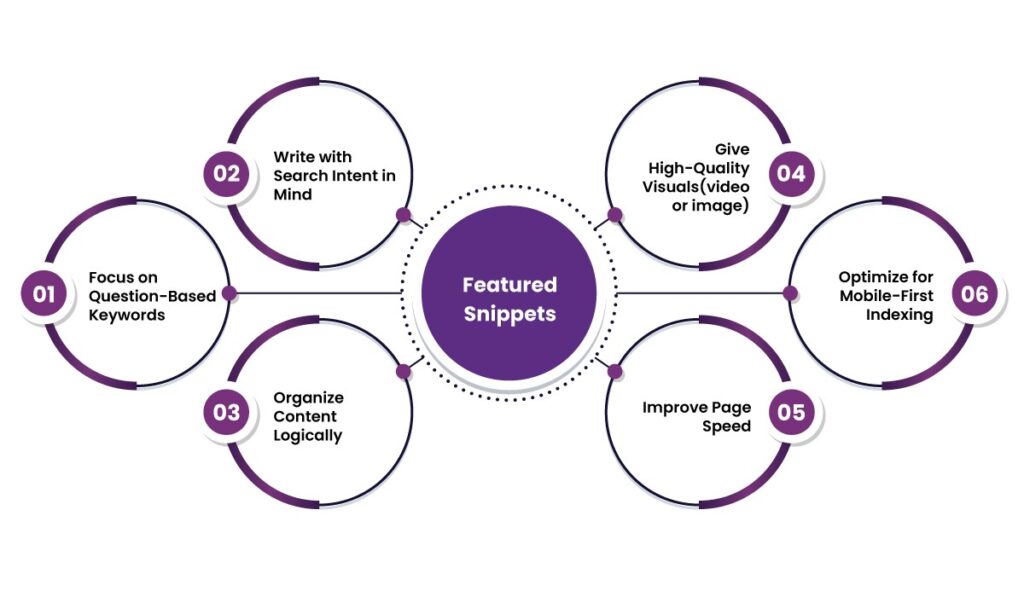
Advanced Strategies for Featured Snippet in SEO Optimization
1. Target “People Also Ask” Boxes
Google’s “People Also Ask” section is a goldmine for featured snippet opportunities. Answering these related questions can increase your chances of appearing in snippets.
2. Keep Content Fresh and Relevant
Outdated content rarely gets featured. Regularly update your content with the latest stats, trends, and examples.
3. Use Schema Markup
Structured data helps Google understand your content better.
How to Implement:
- Use JSON-LD format to tag FAQs, products, or reviews.
- Use tools like Google’s Structured Data Markup Helper for guidance.
4. Analyze Competitor Snippets
Look at featured snippets your competitors are ranking for and identify gaps.
Tools to Use:
- SEMrush
- Ahrefs
- Moz
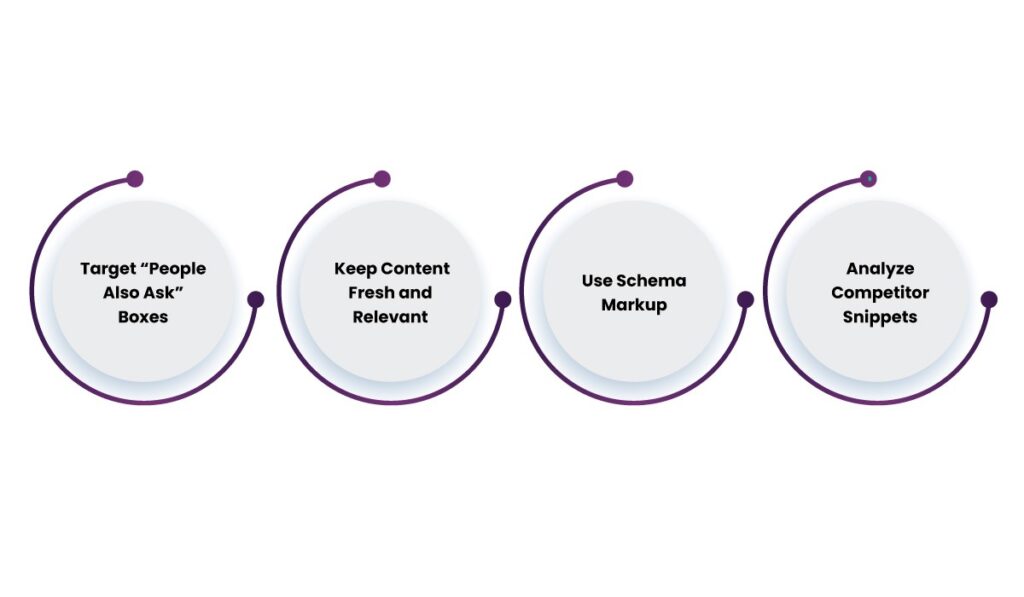
Common Mistakes to Avoid in SEO Optimization for a featured snippet
1. Keyword Stuffing: Overloading your content with keywords can hurt your rankings. Focus on natural, user-friendly language.
2. Ignoring User Intent: If your content doesn’t directly address user queries, it’s unlikely to be featured.
3. Neglecting Content Quality: Google values depth, accuracy, and relevance. Avoid fluff and ensure your content provides value.
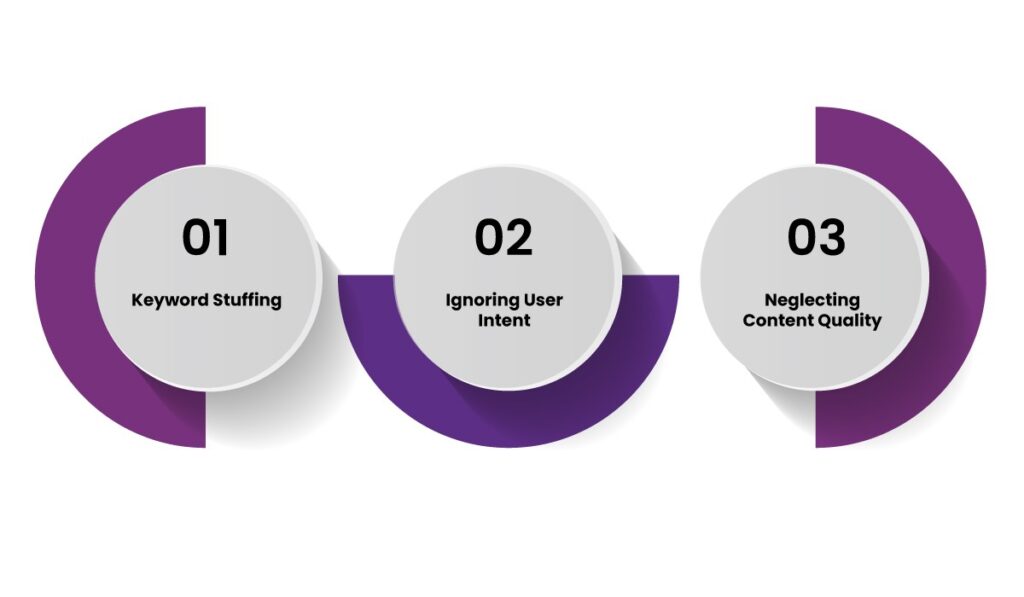
The Future of Featured Snippets in SEO Optimization
As search engines evolve, featured snippets are becoming more sophisticated. Here’s what to expect in 2025:
- AI-Driven Snippets: Search engines will use AI to generate snippets based on user behavior and preferences.
- Increased Focus on Video: With the rise of video content, expect video snippets to become more prevalent.
- Enhanced Voice Search Integration: Optimizing for voice search will become essential as devices rely more heavily on snippets for voice responses.
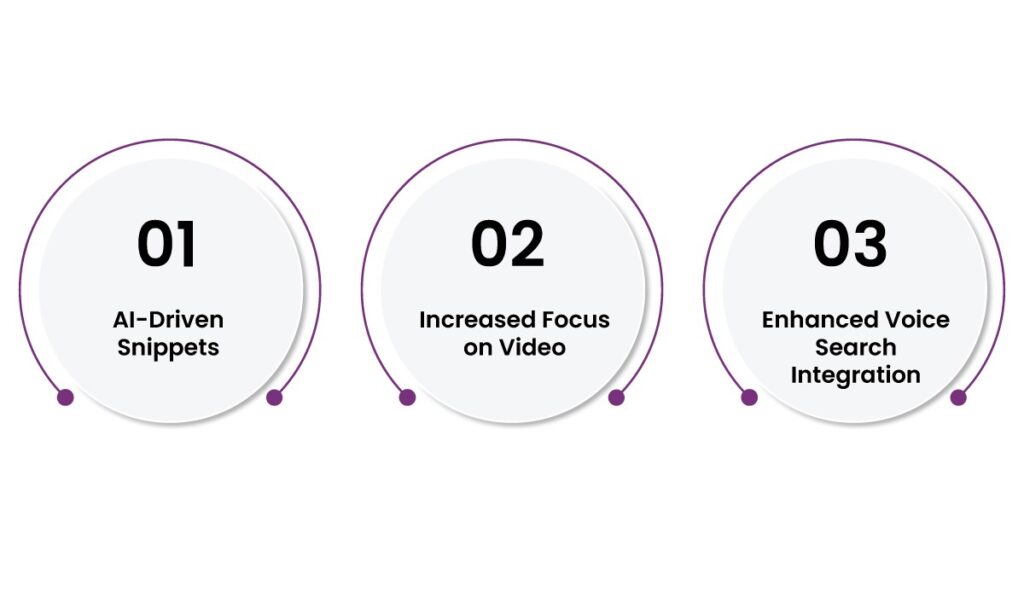
Helixbeat has the best SEO marketers who stay ahead of changing trends with excellent SEO marketing services. They can align your goals with the best results.
Why Partner with an SEO Marketing Company for Featured Snippet Success?
Optimizing for featured snippets in 2025 isn’t just about creating high-quality content—it’s about staying ahead of evolving algorithms, user behavior, and technological advancements. This is where partnering with a professional SEO marketing company like Helixbeat can make a difference.
Helixbeat company offering comprehensive SEO marketing services can:
- Perform in-depth keyword research to target high-value queries.
- Utilize advanced tools and data analytics to optimize your content effectively.
- Monitor your snippet rankings and adapt strategies in real time.
- Ensure your website is optimized for mobile-first indexing, page speed, and voice search.
Featured snippets are no longer optional; they are critical to dominating the SERPs, boosting click-through rates, and driving targeted traffic. By leveraging the expertise of an SEO marketing company like Helixbeat, you can unlock the full potential of your site’s visibility and authority in a competitive landscape.
Conclusion
Incorporating featured snippets into your SEO marketing strategy is more important than ever in 2025. By focusing on user intent, high-quality visuals, improving page speed, and staying mobile-friendly, you can maximize your chances of securing featured snippets.
By holding the hand of Helixbeat, one of the best SEO marketing company, you can change the destiny of your website. We have the best SEO marketers across the world and can rank any website on top with SEO trending.
Stay tuned for more information with Helixbeat for the best SEO marketing services tips.
Frequently asked question
What are featured snippets, and why are they important for SEO?
- Featured snippets are highlighted search results that appear above organic listings in Google’s SERP. They provide quick, direct answers to user queries, improving visibility and driving more traffic to websites.
How can I optimize my content for featured snippets in 2025?
- Focus on writing clear, concise answers to common questions, structure content logically with headings, and use high-quality visuals and mobile-friendly design to increase your chances of appearing in featured snippets.
What types of featured snippets should I target?
- Common types of featured snippets include paragraph snippets, list snippets, and table snippets. Each requires different formatting, such as direct answers, lists, or data tables.
How do I find question-based keywords for featured snippet optimization?
- Use tools like AnswerThePublic, SEMrush, and Google’s “People Also Ask” section to uncover specific questions your audience is asking and integrate them naturally into your content.
What is the role of AI in featured snippets for SEO in 2025?
- AI will play a bigger role in generating snippets based on user behavior and preferences, making it essential to optimize your content for AI-driven algorithms.
Why is page speed important for featured snippets?
- Page speed impacts both user experience and search rankings. Faster-loading pages are more likely to rank higher, making your content more likely to be selected for a featured snippet.
How does mobile-first indexing affect featured snippets in 2025?
- With mobile traffic dominating, Google prioritizes mobile-friendly websites for featured snippets. Ensure your site is optimized for mobile devices to improve your chances of being featured.
Why should I partner with an SEO marketing company for featured snippet optimization?
- Partnering with an experienced SEO company, like Helixbeat, ensures you stay ahead of evolving trends, optimize content effectively, and use advanced tools to boost your chances of earning featured snippets.














